When we decided to visit Niagara Falls, everyone told us to book accommodations at Niagara-on-the-Lake. The town of 17,000 lies on the shores of Lake Ontario at the mouth of the Niagara River.
Although only a 30-minute drive north of Niagara Falls, Niagara-on-the-Lake feels worlds away. You won’t find tacky souvenir shops or hoards of tourists blocking the sidewalks.
Niagara-on-the-Lake History
British loyalists established the town, originally named Newark, in 1792. It briefly served as the capital of Upper Canada. Because of its proximity to Fort Niagara just across the river in New York, the British constructed Fort George in 1802. For this same reason, the capital of Upper Canada moved to Toronto.
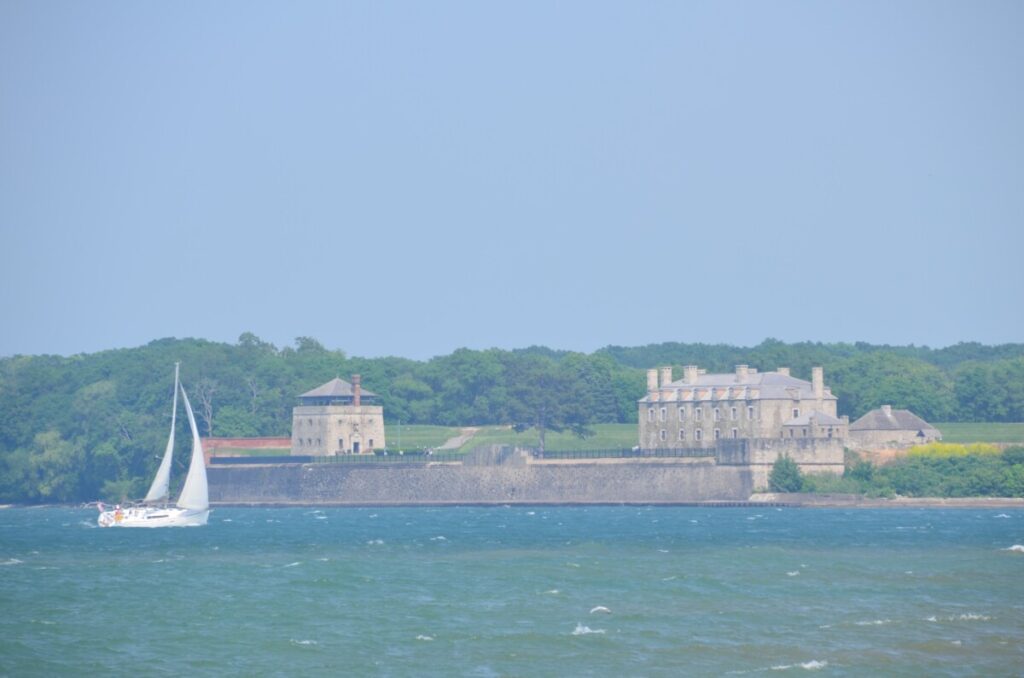
During the War of 1812, an attack from Fort Niagara caused significant damage to Fort George. After the siege, the US burned the remaining homes and structures in Niagara-on-the-Lake. The townspeople rebuilt and the town became a small shipping port.
Architecture
Because of the large collection of houses and buildings built in the classical British architectural style, Parks Canada designated the town as a National Historic Site.
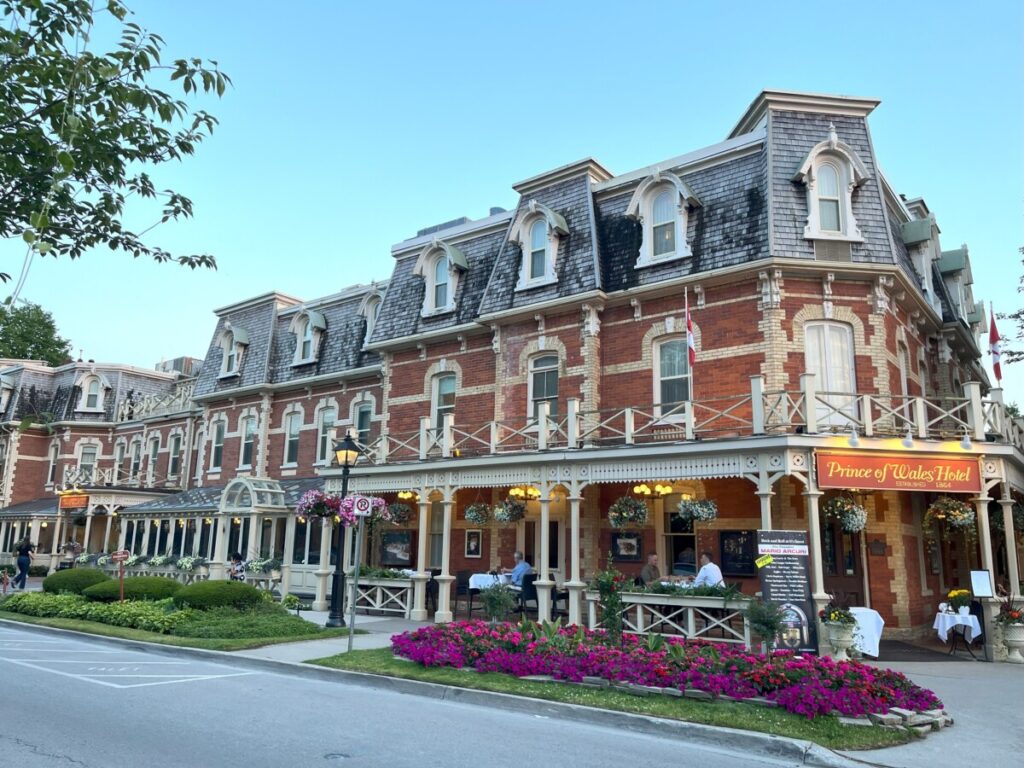
Queen Street remains the main thoroughfare for businesses in the town. The Prince of Wales Hotel sits across from Simcoe Park. Also on Queen Street is the Niagara District House and the Memorial Clock Tower which honors residents who died in WWI. Visitors can shop a large selection of hats at Beau Chapeau and walk inside the restored Niagara Apothecary.
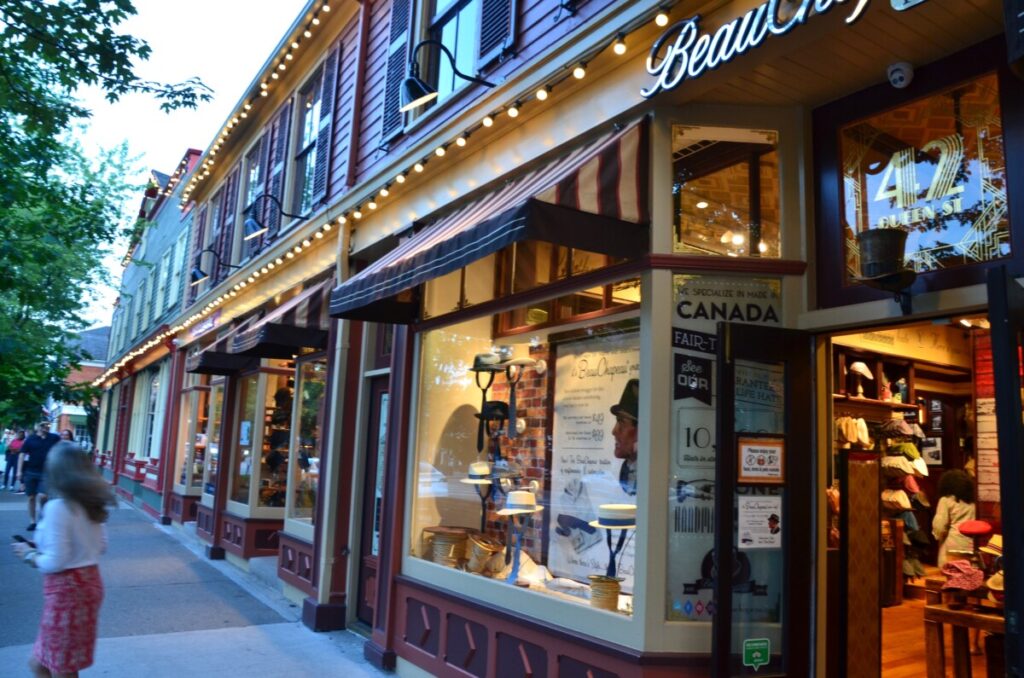
Houses and small inns encompass the streets off of Queen Street. Everywhere we walked, flowers in full bloom greeted us.

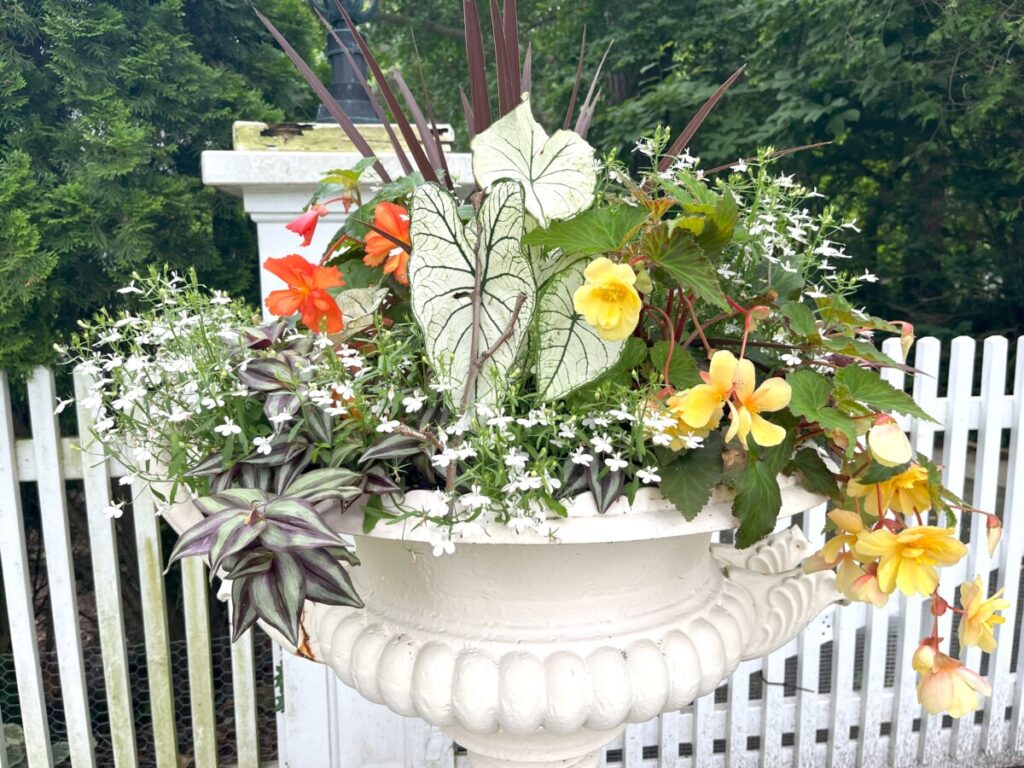
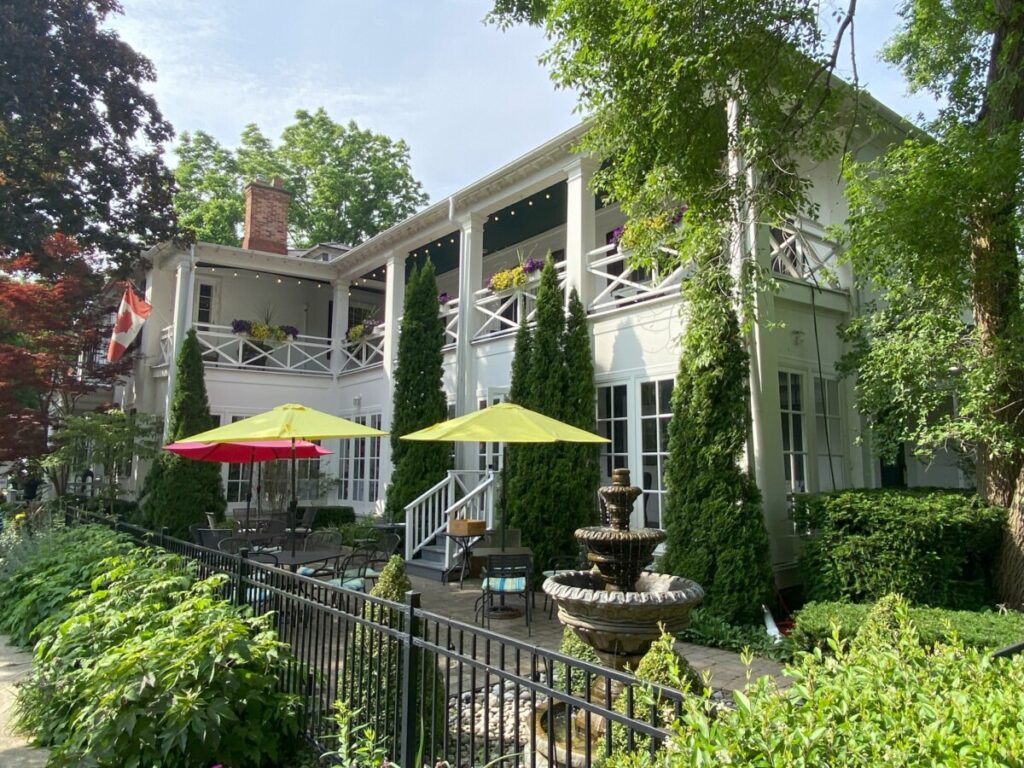
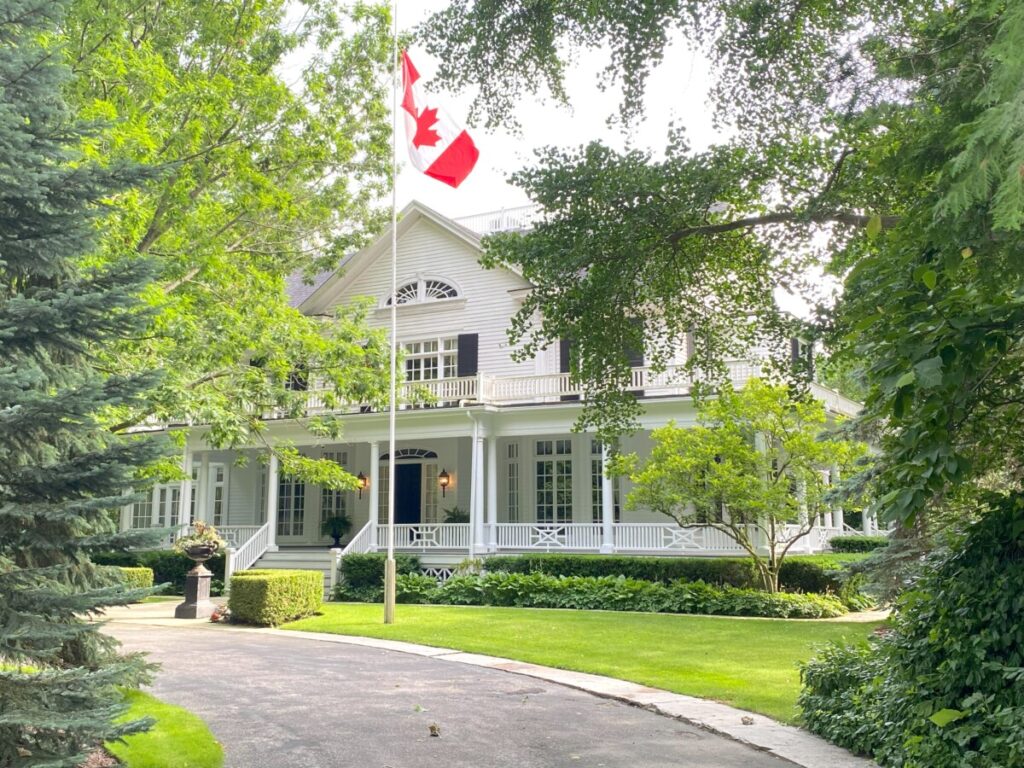
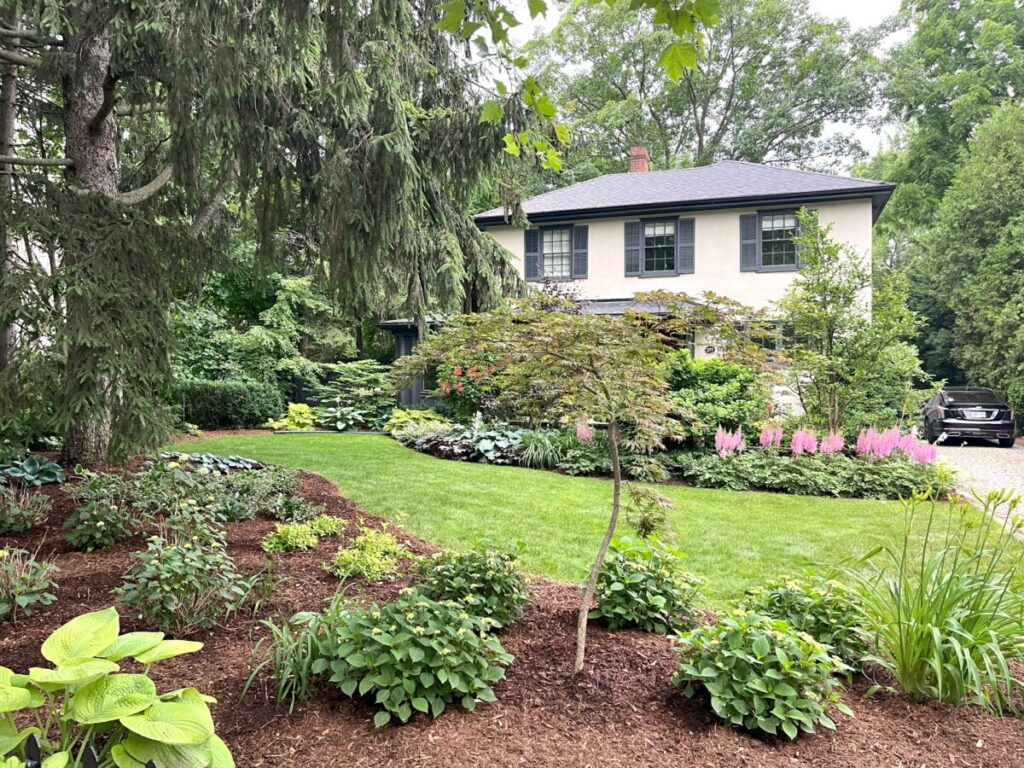
We booked Gatekeeper’s Retreat for a luxurious stay. The owner ushered us to the garden level of the house where a suite of rooms awaited. We had a bedroom, bathroom, a full living room (with a piano!), and a dining room that opened to the backyard with a fire pit, hammock, and other seating areas. David served breakfast promptly at 9 am and we met guests staying in the other two rooms on the second floor.
Vineyards
The rolling hills, fertile soil, and climate make vineyards popular in this part of Ontario. Everywhere we drove, vineyards flanked both sides of the street. With over 50 wineries in the area, visitors could easily spend a week just touring them.
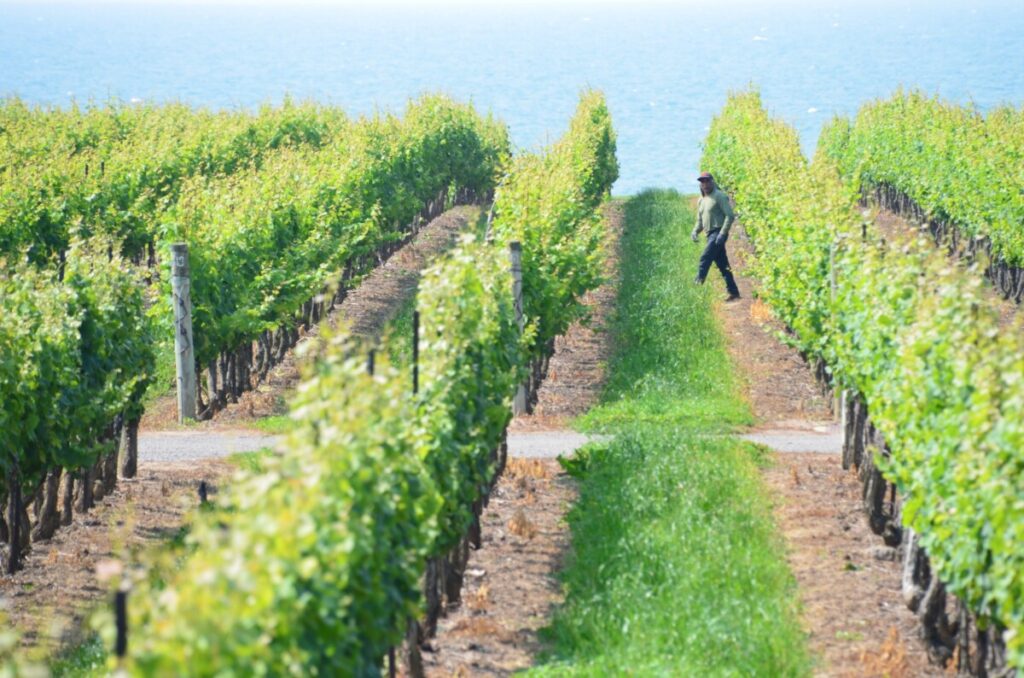
On the way back from Niagara Falls, we stopped at Konzelmann Vineyards. Founded in Germany in 1893, the winery opened this Canadian location in the 1980s. Customers perused the shelves of wine in the retail store while a bacherlorette party wrapped up in the tasting room.
Waterfront Trail
We also walked the Waterfront Trail along Lake Ontario. The serene path hug the shoreline past the grounds of the Niagara-on-the-Lake Golf Club and the remnants of Fort Mississauga to the gazebo and swimming beach at Queen’s Royal Park.
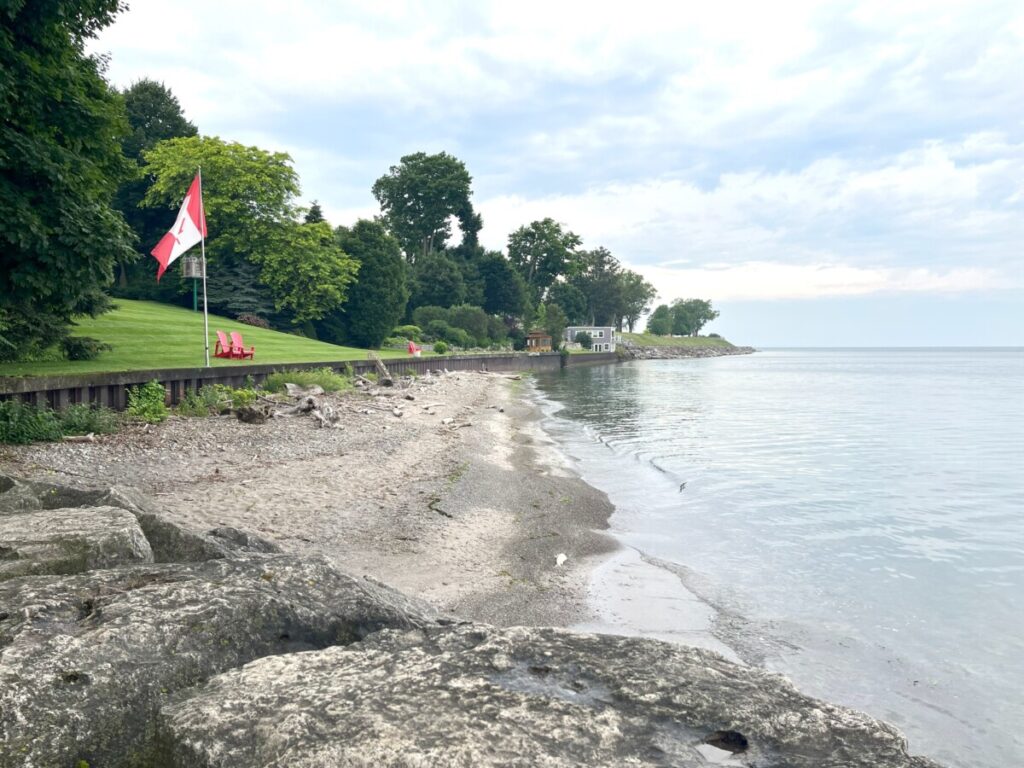
Fort Missassaugua replaced Fort George after the War of 1812. It stayed an active fort until 1870. Today, all that remains is today is a blockhouse.
In Conclusion
Don’t miss Niagara-on-the-Lake if you find yourself in either Toronto or Niagara Falls. The charming town is worth the visit! For more information, check out its website here.
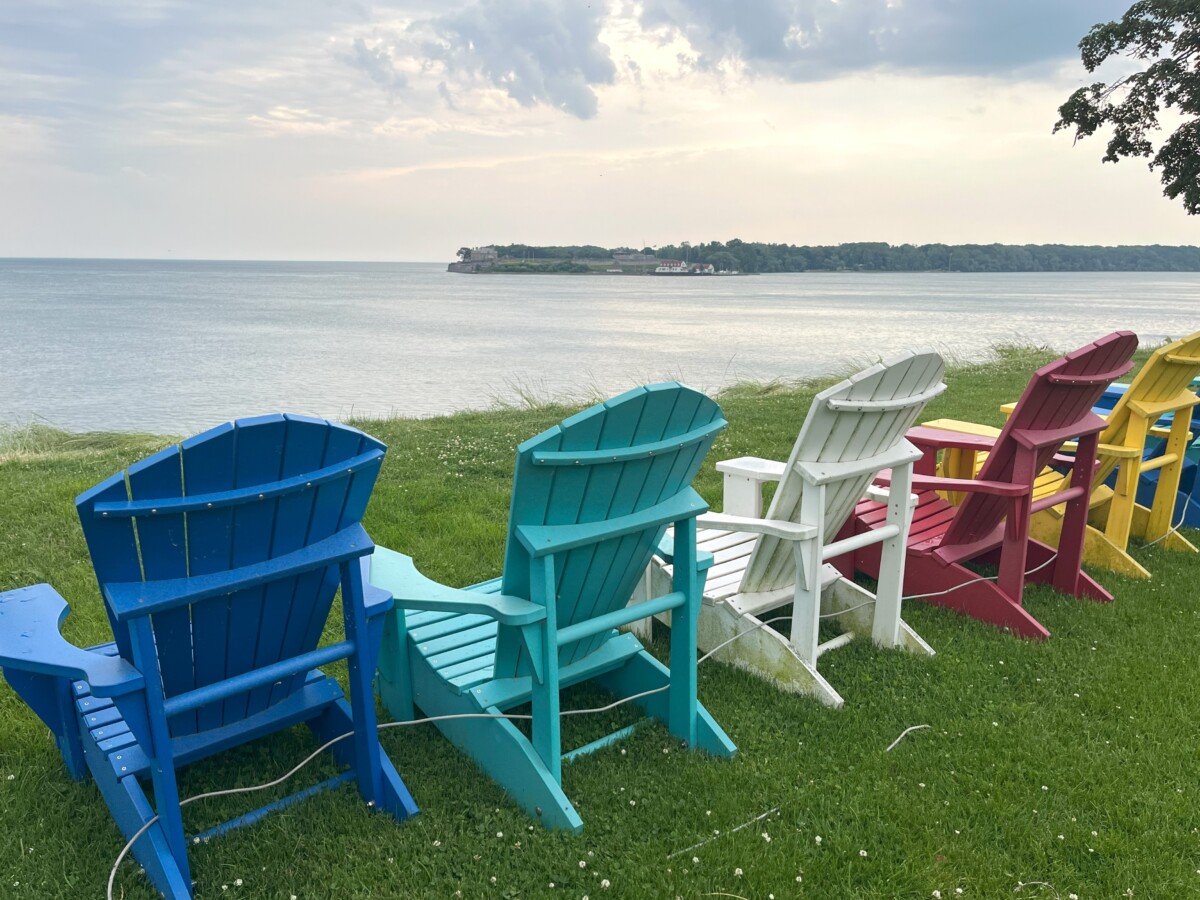
Pingback: Letchworth State Park - NY • Finding Family Adventures
Pingback: Niagara Falls and Finger Lakes of New York Itinerary • Finding Family Adventures